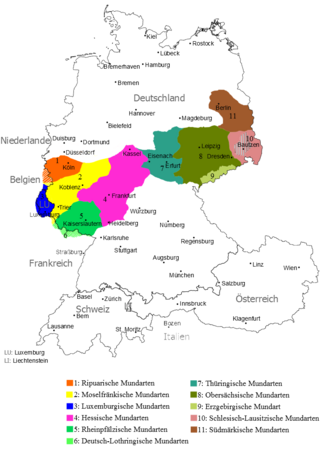
The Dravidian languages are a family of languages spoken by 250 million people, mainly in southern India, north-east Sri Lanka, and south-west Pakistan. Dravidian is first attested in the 2nd century BCE, as inscriptions in Tamil-Brahmi script on cave walls in the Madurai and Tirunelveli districts of Tamil Nadu.

Tamil is a Dravidian language natively spoken by the Tamil people of South Asia. Tamil is an official language of the Indian state of Tamil Nadu and union territory of Puducherry, and the sovereign nations of Sri Lanka and Singapore. Tamil is also spoken by significant minorities in the four other South Indian states of Kerala, Karnataka, Andhra Pradesh and Telangana, and the Union Territory of the Andaman and Nicobar Islands. It is also spoken by the Tamil diaspora found in many countries, including Malaysia, Myanmar, South Africa, United Kingdom, United States, Canada, Australia and Mauritius. Tamil is also natively spoken by the Sri Lankan Moors. One of 22 scheduled languages in the Constitution of India, Tamil was the first to be classified as a classical language of India.
The Finnish language is spoken by the majority of the population in Finland and by ethnic Finns elsewhere. Unlike the languages spoken in neighbouring countries, such as Swedish and Norwegian, which are North Germanic languages, or Russian, which is a Slavic language, Finnish is a Uralic language of the Finnic languages group. Typologically, Finnish is agglutinative. As in some other Uralic languages, Finnish has vowel harmony, and like other Finnic languages, it has consonant gradation.
The imperative mood is a grammatical mood that forms a command or request.
Beja is an Afroasiatic language of the Cushitic branch spoken on the western coast of the Red Sea by the Beja people. Its speakers inhabit parts of Egypt, Sudan and Eritrea. In 2017 there were 2,220,000 Beja speakers in Sudan according to Ethnologue. In 1993 there were 77,000 speakers of Beja in Egypt, current number of speakers today in Egypt is unknown. As of 2020 there are an estimated 201,000 Beja speakers in Eritrea. The total number of speakers in all three countries is 2,498,000.
Chuvash is a Turkic language spoken in European Russia, primarily in the Chuvash Republic and adjacent areas. It is the only surviving member of the Oghur branch of Turkic languages, one of the two principal branches of the Turkic family. Despite grammatical similarity with the rest of Turkic language family, the presence of changes in Chuvash pronunciation has led some scholars to see Chuvash as originating not from Proto-Turkic but from another proto-language spoken at the time of Proto-Turkic.
Sankethi is a South Dravidian language that is closely related to Kannada and Tamil. It is sometimes considered a dialect of Kannada or Tamil, but there are considerable differences that make it unintelligible to speakers of both languages. It has strong lexical influences from Kannada, as well as borrowings from Sanskrit. It is most commonly spoken in Karnataka, India by the Sankethi people, who migrated from Sengottai in Tamilnadu.

Gilaki is an Iranian language of the Northwestern branch, spoken in south of Caspian Sea by Gilak people. Gilaki is closely related to Mazandarani. The two languages of Gilaki and Mazandarani have similar vocabularies. The Gilaki and Mazandarani languages share certain typological features with Caucasian languages, reflecting the history, ethnic identity, and close relatedness to the Caucasus region and Caucasian peoples of the Gilak people and Mazandarani people.
The Ojibwe language is an Algonquian American Indian language spoken throughout the Great Lakes region and westward onto the northern plains. It is one of the largest American Indian languages north of Mexico in terms of number of speakers, and exhibits a large number of divergent dialects. For the most part, this article describes the Minnesota variety of the Southwestern dialect. The orthography used is the Fiero Double-Vowel System.
This article provides a grammar sketch of the Nawat or Pipil language, an endangered language spoken by the Pipils of western El Salvador and Nicarao people of Nicaragua. It belongs to the Nahua group within the Uto-Aztecan language family. There also exists a brief typological overview of the language that summarizes the language's most salient features of general typological interest in more technical terms.

Erzgebirgisch is a (East) Central German dialect, spoken mainly in the central Ore Mountains in Saxony. It has received relatively little academic attention. Due to the high mobility of the population and the resulting contact with Upper Saxon, the high emigration rate and its low mutual intelligibility with other dialects, the number of speakers is decreasing.
Southern Oromo, or Borana, is a variety of Oromo spoken in southern Ethiopia and northern Kenya by the Borana people. Günther Schlee also notes that it is the native language of a number of related peoples, such as the Sakuye.
East Cree, also known as James Bay (Eastern) Cree, and East Main Cree, is a group of Cree dialects spoken in Quebec, Canada on the east coast of lower Hudson Bay and James Bay, and inland southeastward from James Bay. Cree is one of the most spoken non-official aboriginal languages of Canada. Four dialects have been tentatively identified including the Southern Inland dialect (Iyiniw-Ayamiwin) spoken in Mistissini, Oujé-Bougoumou, Waswanipi, and Nemaska; the Southern Coastal dialect (Iyiyiw-Ayamiwin) spoken in Nemaska, Waskaganish, and Eastmain; the Northern Coastal Dialects (Iyiyiw-Ayimiwin), one spoken in Wemindji and Chisasibi and the other spoken in Whapmagoostui. The dialects are mutually intelligible, though difficulty arises as the distance between communities increases.
Standard Kannada grammar is primarily based on Keshiraja's Shabdamanidarpana which provides the fullest systematic exposition of Kannada language. The earlier grammatical works include portions of Kavirajamarga of 9th century, Kavyavalokana and Karnatakabhashabhushana both authored by Nagavarma II in first half of the 12th century.
Kho'ini is a Tatic dialect or language spoken in northwestern Iran, and is one of many Western Iranian languages. It is spoken in the village of Xoin and surrounding areas, about 60 kilometres (37 mi) southwest of Zanjan city in northern Iran. The Xoini verbal system follows the general pattern found in other Tati dialects. However, the dialect has its own special characteristics such as continuous present which is formed by the past stem, a preverb shift, and the use of connective sounds. The dialect is in danger of extinction.

Tundra Nenets is a Uralic language spoken in European Russia and North-Western Siberia. It is the largest and best-preserved language in the Samoyedic group.
Malayalam is one of the Dravidian languages and as such has an agglutinative grammar. The word order is generally subject–object–verb, although other orders are often employed for reasons such as emphasis. Nouns are inflected for case and number, whilst verbs are conjugated for tense, mood and causativity. Malayalam adjectives, adverbs, postpositions and conjunctions do not undergo any inflection; they are invariant.
Konda-Dora, also known simply as Konda or Kubi, is a Dravidian language spoken in India. It is spoken by the scheduled tribe of the Konda-Dora, who mostly live in the districts of Vizianagaram, Srikakulam, and East Godavari in Andhra Pradesh, and the Koraput district in Odisha.
Kuvi is a South-Central Dravidian language spoken in the Indian state of Odisha. The language is one of two spoken by the Kandhas, with the other being the closely related and more dominant Kui language. According to the 2011 Indian census, there are around 155,000 speakers. The orthography is the Odia script. The grammatical structure of this language is comparable to other similar languages such as Kui which all fall under the classification of a Dravidian language.
Beary or Byari is a Dravidian language spoken by the Bearys who are part of the Muslim community in Tulu Nadu region of Southern Karnataka and Northern Kerala. The community is often recognized as Bearys or Beary Muslims. Beary language is made of Tulu phonology and grammar with Malayalam idioms. Due to the trading role of the community, the language acquired loan words from other languages of Tulu, Malayalam, Kannada and also from Perso-Arabic sources.




